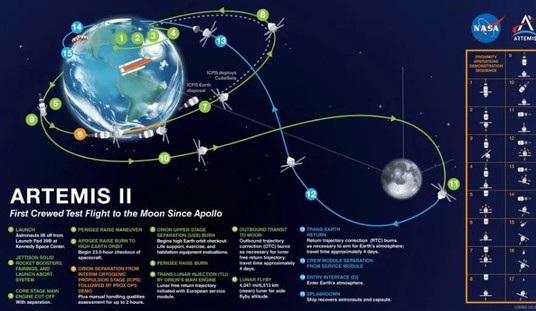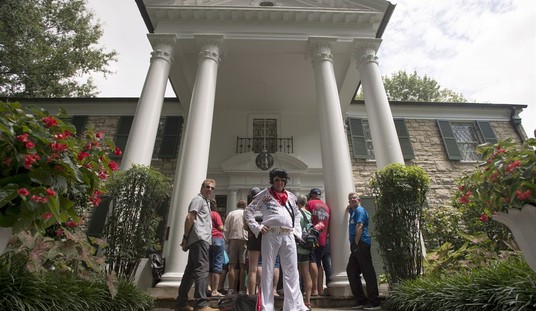Looks like ADP proved prophetic after all. While states started increasing restrictions on commerce, and a handful all but shut down all over again, jobs began disappearing right along. The Bureau of Labor Statistics shows that the US economy lost 140,000 jobs last month, the first negative number since the beginning of the pandemic.
Even the one piece of bright news comes with a caveat. The unemployment rate remained steady at 6.7%, but that was due in part to a continued drain-off in the labor force:
Total nonfarm payroll employment declined by 140,000 in December, and the unemployment rate was unchanged at 6.7 percent, the U.S. Bureau of Labor Statistics reported today. The decline in payroll employment reflects the recent increase in coronavirus (COVID-19) cases and efforts to contain the pandemic. In December, job losses in leisure and hospitality and in private education were partially offset by gains in professional and business services, retail trade, and construction. …
Among the unemployed, the number of persons on temporary layoff increased by 277,000 in December to 3.0 million. This measure is down considerably from the high of 18.0 million in April but is 2.3 million higher than in February. The number of permanent job losers declined by 348,000 to 3.4 million in December but is up by 2.1 million since February. The number of unemployed reentrants increased by 282,000 to 2.3 million over the month, 452,000 higher than in February. (See table A-11.)
In December, the number of persons jobless less than 5 weeks increased by 449,000 to 2.9 million, while the number of persons jobless 15 to 26 weeks declined by 303,000 to 1.6 million. The number of long-term unemployed (those jobless for 27 weeks or more), at 4.0 million, was essentially unchanged in December but has increased by 2.8 million since February. The number of those jobless for 27 weeks or more accounted for 37.1 percent of total unemployed in December. (See table A-12.)
The labor force participation rate and the employment-population ratio were both unchanged over the month, at 61.5 percent and 57.4 percent, respectively. These measures are up from their recent April lows but are lower than in February by 1.8 percentage points and 3.7 percentage points, respectively.
Needless to say, this was a miss, although ADP came very close to hitting it perfectly (-121K). CNBC reports that economists expected to see an addition of 50,000 jobs, which would have been bad enough under the circumstances:
Job creation came to a halt in December as restrictions brought on by surging Covid-19 cases hammered virus-sensitive industries, particularly bars and restaurants, which lost nearly half a million positions for the month.
The Labor Department reported Friday that nonfarm payrolls fell by 140,000. That was below expectations for 50,000 from economists surveyed by Dow Jones.
Bear in mind that the US economy is still nearly 10 million jobs short of what we had at the beginning of the pandemic. The last two months have barely kept pace with population growth, let alone helped us catch up to the overall job losses. In December, wages went up but hours fell, so the net impact for those working was negligible at best.
The report did have some good news on the revisions, but not nearly good enough:
The change in total nonfarm payroll employment for October was revised up by 44,000, from +610,000 to +654,000, and the change for November was revised up by 91,000, from +245,000 to +336,000. With these revisions, employment in October and November combined was 135,000 more than previously reported.
CNBC notes that the markets don’t seem to be too worried. That’s because they anticipate that the data will force Congress to respond with more stimulus:
Markets, however, shrugged off the report, likely on the anticipation that it strengthened the case for more stimulus from Congress and reflected a likely temporary reduction in jobs that would be reversed as Covid vaccine distribution accelerated. Stocks were poised for a modest gain at the open.
“In some ways, bad news is good news, because it increases the probability for more stimulus,” said Michael Arone, chief investment strategist for US SPDR Business. “Investors have convinced themselves this week that given what’s happened in Georgia, given the weakness in the economic data, that more help is on the way. We’re going to get more fiscal help, and it’s likely to happen pretty soon.”
That’s almost certain to be the case. Now that the election is over and Democrats managed to get narrow control in Washington, the roadblocks have mostly been removed for more aid. The short-term prospects will be for more state and local government aid and more direct stimulus payments, both of which might be good for a small bump in the next month in economic activity. Chuck Schumer’s already planning on the $2000 expansion of stimulus payments, and there might be more coming after that if Republicans don’t block it.
However, that’s not the real problem in these numbers. Like it or not, the issue is the lockdowns or near-lockdowns that are strangling commerce. They might be necessary, but the data from locked-down California doesn’t suggest that they are effective in stopping transmissions. Why that is remains to be seen, but Florida has more of its economy open and yet doesn’t seem to have anywhere near the spike in amplitude that California has — and they are both warm-weather states. The key to both crises might be to get outdoor venues back open so people don’t congregate in homes, allowing for both social and commercial activity to take place in safer environments.
And longer term, the vaccines should allow for a return to normal by summer. But that will require better logistics than we have experienced thus far. Perhaps we can use that sidelined workforce of 9 million-plus Americans to serve that purpose? That would not just stimulate the economy — it would likely make any further stimulus unnecessary.







